"I start each drawing as though it were to be a 'finish'. If it develops unsatisfactorily, I start another. Often I make several starts. I draw quickly and my style is such that this re-doing system is not much more time-consuming than the preliminary pencil sketch method would be."
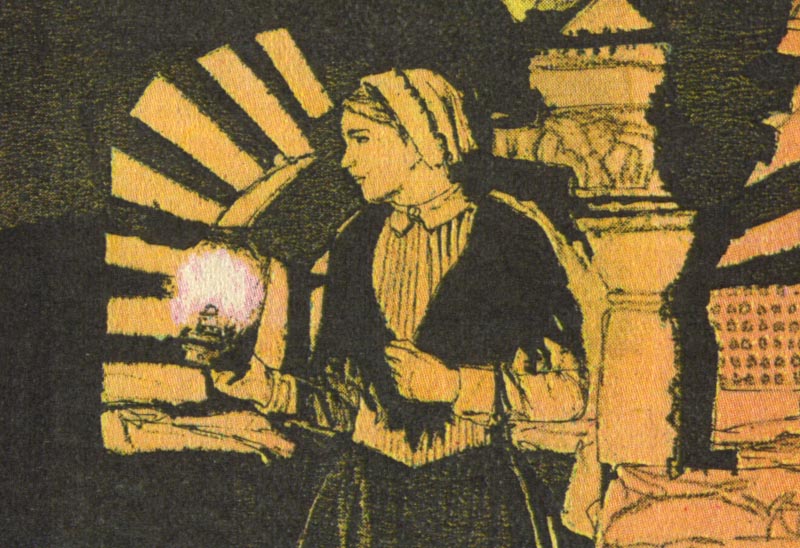
"My illustrations are all based upon drawings in ink. Some are straight black and whites..."

"... but even those in color are essentially drawings..."

"... over which tints are applied."
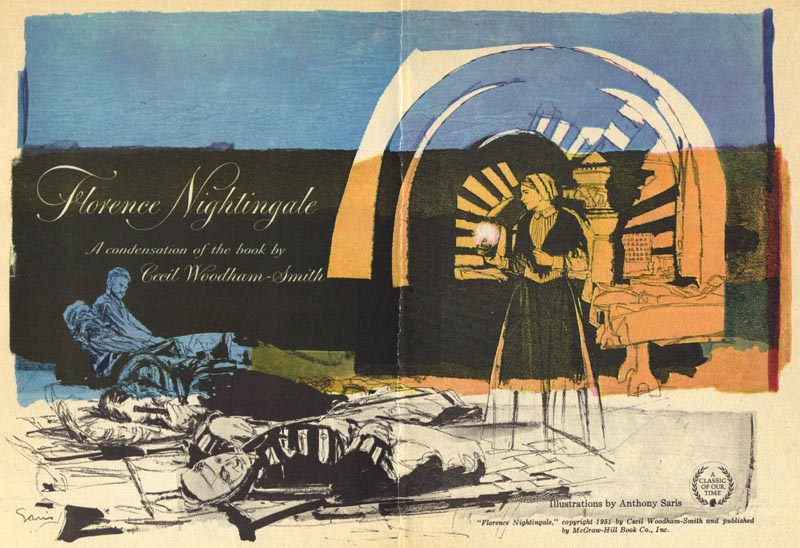
"In making illustrations I seldom use a pencil for preliminary guidance, preferring to draw directly with the pen. The drawing is done purely in outline. When that seems satisfactory, I put in the important dramatic, solid black areas and the half-tone values."
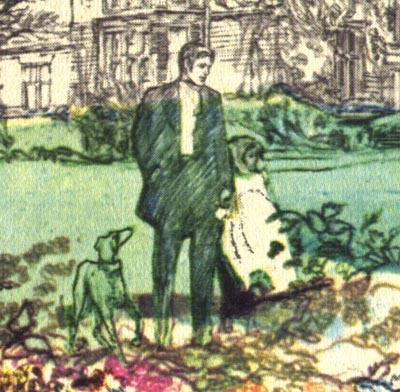
"In a colored illustration the pigment is applied over the ink."

"Later, I insert the smaller, incidental blacks. Colored inks are my basic color source."

"Basically, my method is as simple as the preceeding paragraph states, but as each step permits unlimited variation, the procedure can become as elaborate as desired."

"I believe in experimentation, and whenever feasible, I test new methods for novel incidental effects. For example... in adding the color (colored inks) I may employ a brush or an ink roller like those used in block printing."

"It is used, of course, only to cover large, simple areas. The other shapes must be masked out. I use frisket paper for the large expanses and liquid frisket for details."
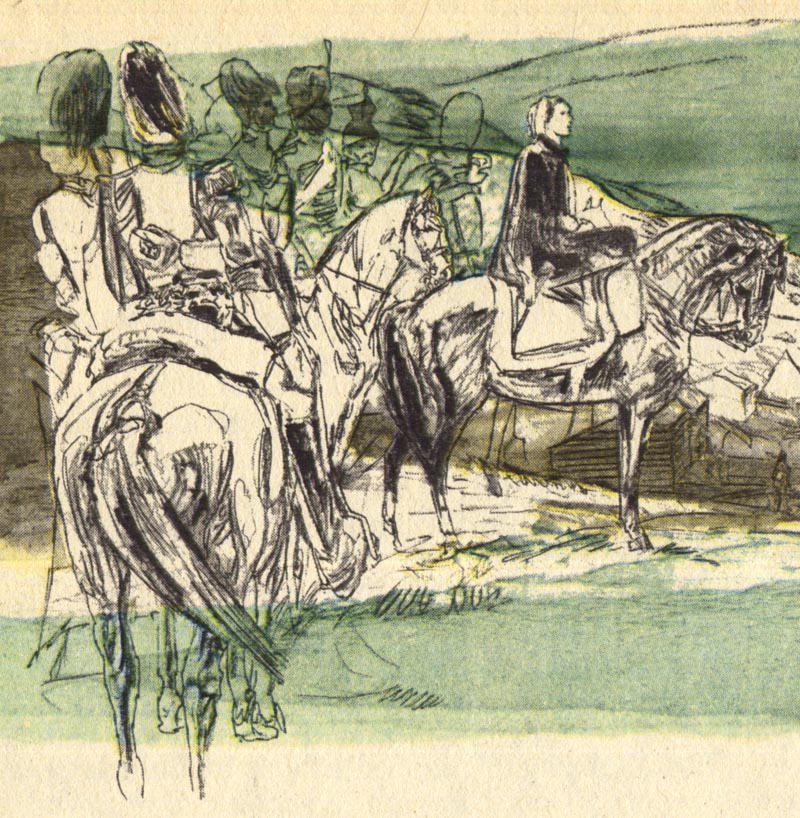
"Drawing ink, of course, is much thinner than printing ink and of different composition and does not lend itself to flat, even coloring, but as I am always alert for fortunate accidentals, this offers quite an advantage in my eyes."
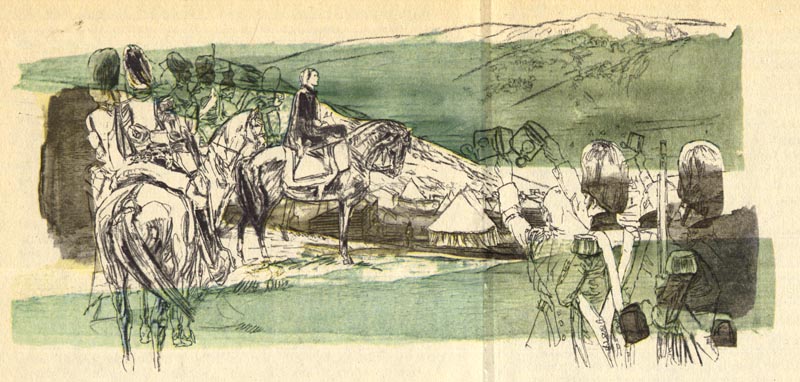
"I make many experimental variations with frisket in solid masses and in line. Let us imagine the subject is a figure clothed in decorative costume. The elaborate line drawing may be made with frisket on plain white paper. Color as desired is then applied over the drawing, and when the frisket is removed and the white line design is modulated suitably, the result is striking and unusual. True, a similar effect might be achieved by drawing the outline design with white ink..."
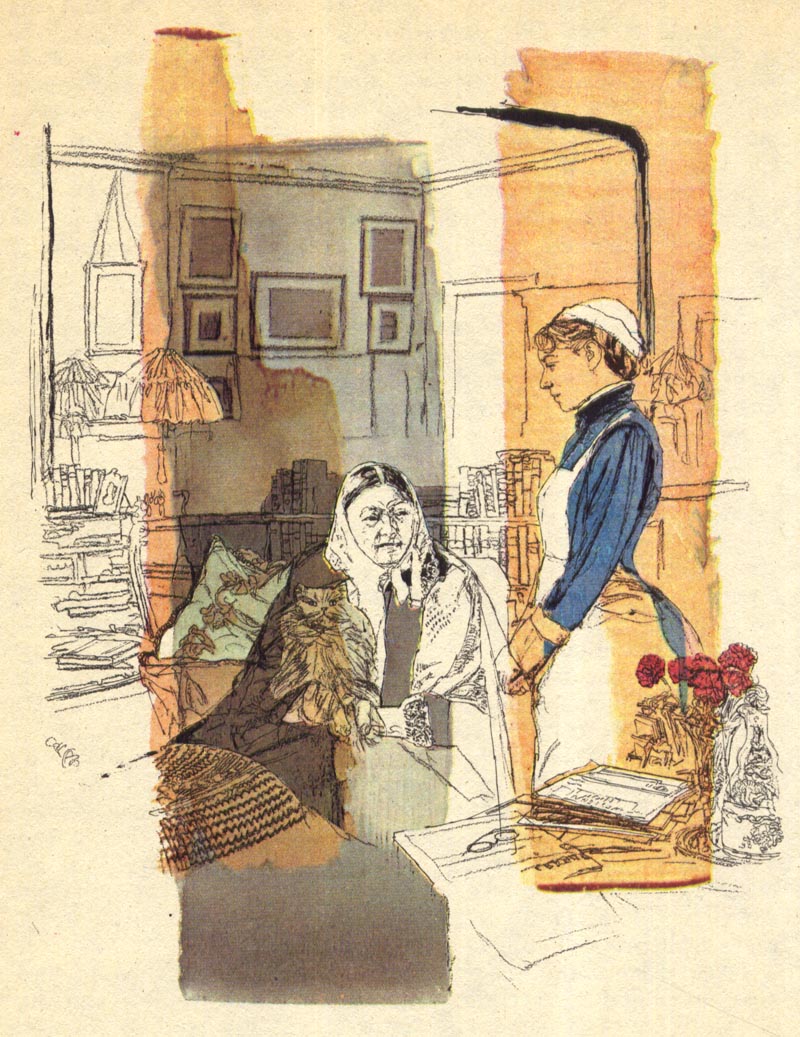
"... but to me the unmechanical, fortuitous result of the first method is infinitely to be desired from an artistic point of view."
* My Anthony Saris Flickr set.
* Charlie Allen's latest CAWS - a dozen amazing b/w ink-line drawings from the '50s and '60s - not to be missed!
wow interesting. really great stuff! i love the idea of going for it on the first try with ink, he must be really good at visualizing his images in his head first.
ReplyDeleteI love this type of block coloring - great post, Leif!
ReplyDeleteThanks Brad and Matt; yes, Saris talked about spending quite a bit of time on research and thought before he would put pen to paper. I suppose that he did have a good idea of the visual in his mind... but remember how in Part 1 he said he would also let a drawing grow organically, so that the end result might be quite a bit larger than he first imagined as he added to it. Really different from how I work!
ReplyDeleteFletcher Martin's figures are drawn more subjective.. exaggerating the character of the figure an generalizing the folds in the clothing, etc., in comparison to Anthony Saris. In his later work during the 1940's, Floyd Davis also did figures from his imagination, which were whimsical yet often very dynamic. Drawing from the imagination is more Expressionistic and character driven, than a more academic technique driven approach like Saris. Although I appreciate and admire both approaches, I always find the beauty and skilled accuracy of academic draftsmanship very pleasing and satisfying, personally. The incredible difficulty of controlled spontaneity and accuracy, was our ultimate goal for most of us illustration students in the late 50's.
ReplyDeleteTom Watson
Really enjoyed this post. Very much like the looseness and energy that his way of working captures. I draw quite differently to how I illustrate which I have always found quite frustrating. This has really given me pause for thought. Thanks
ReplyDeleteHe was an incredible Uncle. Loved him dearly.
ReplyDelete